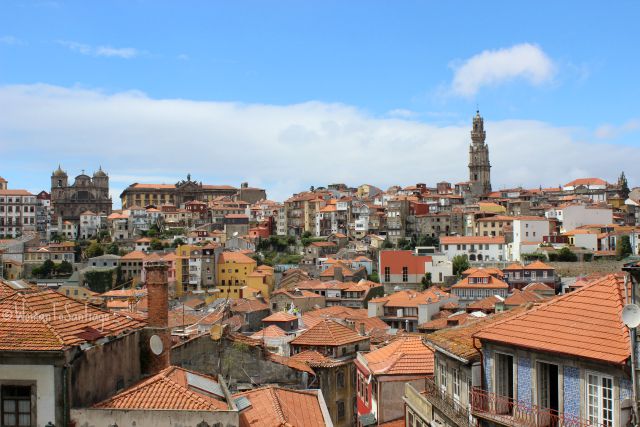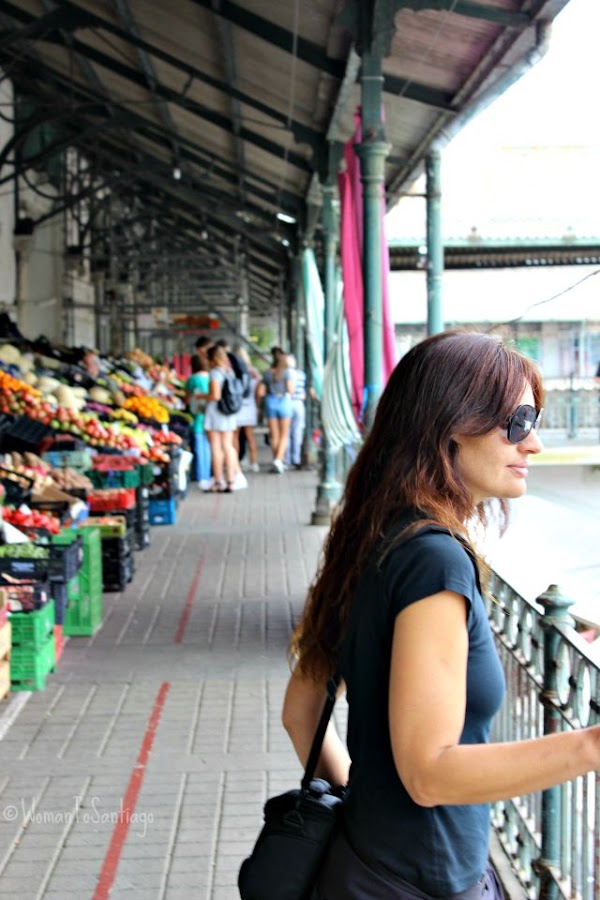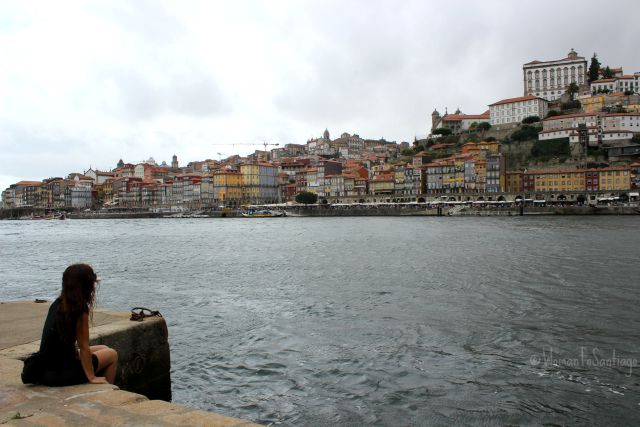Me atrae Oporto. De siempre. Su deliciosa decadencia es subyugante cuando paseas no sin cierta dificultad por sus empinadas callejuelas hacia ninguna parte.
I am somewhat attracted by Oporto. Its delicious decline is captivating when you walk with difficulty along its steep narrow streets to nowhere.
Tiene cierto mérito físico, al igual que el Camino de Santiago, conocer una ciudad que mira al río Duero en lugar de hacia un Océano. Posee mucho encanto, el mismo que hace discurrir el tiempo tan rápido, que al llegar al hostel bien entrada la noche, te hace notar la gran paliza que tus pies se han llevado.
Lugar inmejorable para el inicio de nuestro primer Camino Portugués por la costa. Y como punto de partida, la Librería Lello donde encontramos una pequeña guía de esta vía que nos sirvió de especial credencial hasta Compostela. Ahora, una vez terminado el viaje, y tras 231 Km de costa Atlántica, es un magnífico documento repleto de sellos y anécdotas manuscritas.
Tres miradores son ineludibles para conocer la ciudad en la distancia. Dos muy arriba, el primero pasado el puente de Luis I donde muere el Teleférico de Vila Nova de Gaia; el segundo es el mirador de su Seo. El tercero, es el más personal y vivo, el que te da la visión de subir y bajar por el enjambre del viejo casco de Oporto hasta agotar el aliento. Si el tiempo lo permite, y el verano es suave por la noche, existe un cuarto mucho más relajado: Las terrazas sobre las bodegas en la orilla de Gaia. Con una copa de vino de Oporto en la mano, y las luces del viejo casco iluminando en terrazas al otro lado del Duero, la visión es espectacular para todos y cada uno de tus sentidos.
Tomaos un tiempo, un día entero, quizá dos para convertir el callejear por Oporto en la primera etapa del Camino Portugués. Sellad en una taberna de la ribera al caer la tarde, en la Lello, no sin antes llevaros un buen libro, en el local del Fado más sentido, bajo la Torre de los Clérigos, en cualquiera de sus bodegas del vino homónimo, en el Mercado do Bolhão, o en su confitería tras probar al menos dos tartaletas de Belem.
Oporto. (Camino de Santiago Portugués)
It has some merit in terms of physical strength, the Camino de Santiago as well, visiting the city which faces the sea. Oporto is charming and this is the reason why time flies by and upon arriving at hostel in the midnight you start to feel your feet very tired.
It is a great place to start our first Portuguese Camino along the coast. And as a starting point, the Lello Library where we found a small guide about this way that we used as a special credential till Compostela. Now, once we finished the travel, and after 231 kilometres along the Atlantic Coast, it is an excellent document full of stamps and handwritten stories.
Three viewpoints are inescapable to discover the city into the distance. Two are very high, the first one on the Luis I Bridge nearby Vila Nova de Gaia Funicular. The second one is the Seo’s viewpoint. The third one is more personal and intense, walking along the steep streets, a continuous up and down-hills in the old quarter of Oporto till running out of breath. There is another relaxing one for warm summer nights. The terraces of the wineries in Gaia. With a wine glass in your hand and the lights of the old quarter on the other side of the Duero River, the sight is awesome for all of your senses.
Take your time, a whole day, perhaps two to turn walking Oporto into the first stage of the Portuguese Way. Put on a stamp in a tavern of the riverbank at sunset, put it on also at Lello Library after buying a nice book, under the Clérigos Tower, in any of the wineries of Oporto Wine, in the Mercado do Bolhão or in its baker’s after tasting at least two Tartaletas de Belem. An excellent source of energy to start walking on the same Camino.
Oporto. (Camino de Santiago Portugués)
Photography by WomanToSantiago
Share / Comparte
Share on twitter
follow us / Síguenos


















